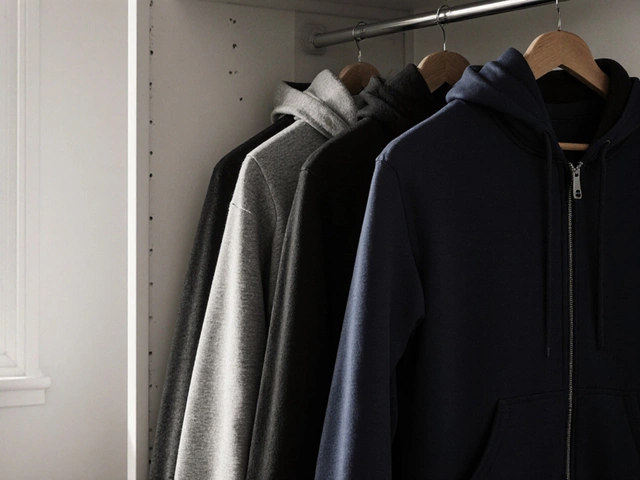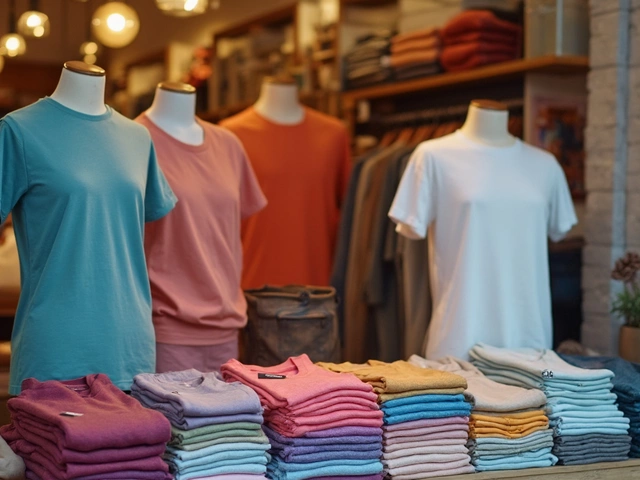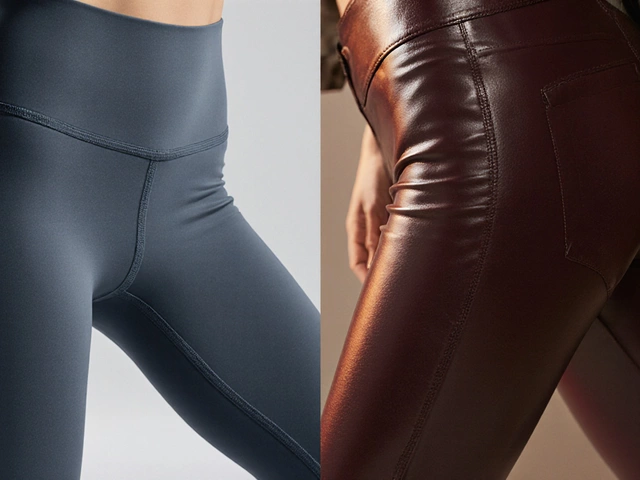Key Characteristics of Sportswear: Performance, Comfort & Style
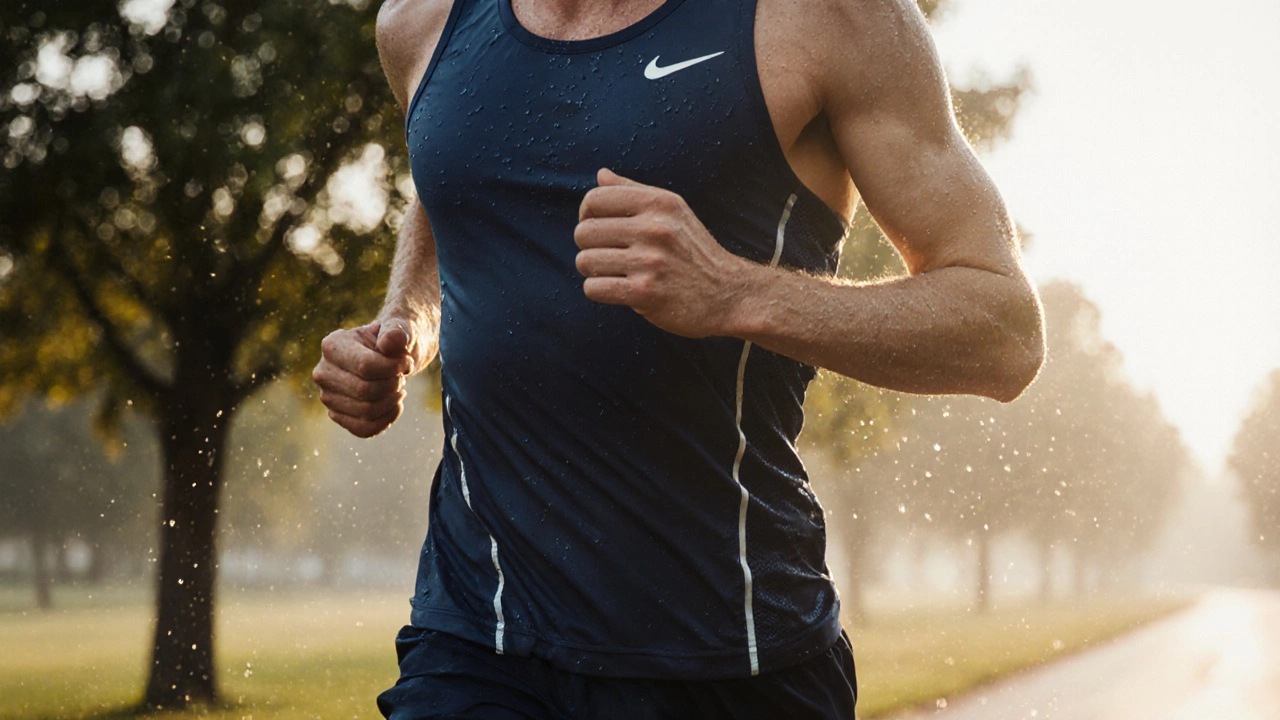
- Cleo Fairchild
- 16 October 2025
- 0 Comments
Sportswear Fabric Selector
Find Your Perfect Fabric Match
Select your activity and priorities to get personalized recommendations for sportswear fabrics.
Adjust sliders to rank your priorities
When you hear the word Sportswear is clothing designed for athletic activities that balances performance, comfort and everyday style, you probably picture a runner’s shirt or a gym hoodie. Sportswear has become a go‑to choice not just for the gym but also for casual outings, travel and even office environments.
What makes sportswear different from regular apparel?
Regular clothes prioritize fashion trends and durability for everyday wear. Sportswear, on the other hand, is engineered with four core goals:
- Performance: Materials that move sweat away, keep you cool and support muscles.
- Comfort: Stretch, softness and a fit that follows your body’s motion.
- Functionality: Features like hidden pockets, reflective details and easy‑care care.
- Style: A modern look that can transition from workout to street.
These goals drive every design decision, from fabric choice to seam construction.
Performance fabrics and their traits
Fabric technology is the heart of sportswear. Below are the most common fabric categories and what they bring to the table.
- Moisture-wicking fabric - pulls sweat from skin to the surface where it evaporates faster. Brands call it Dri‑Fit, HeatGear or Climalite.
- Stretchable fibers - usually a blend of polyester and elastane, giving a 4-6% stretch that moves with you.
- Breathable mesh - strategically placed panels that increase airflow without adding weight.
- UV protection - a chemical finish that blocks up to 50% of UV rays, great for outdoor runners.
- Compression technology - tight‑fitting zones that improve circulation and reduce muscle vibration.
- Antimicrobial treatment - silver‑ion or trench‑coat finishes that limit odor buildup.
Design features that boost ergonomics
Beyond fabric, the cut and construction play a huge role. Look for:
- Flat‑lock seams that reduce chafing.
- Raglan sleeves for unrestricted arm movement.
- Drop‑shoulder or relaxed fits for a natural range of motion.
- Stretch panels on the sides of leggings to aid hip flexion.
- Reflective strips that stay visible in low light without compromising the look.
These ergonomic tweaks mean you can train harder without distraction.
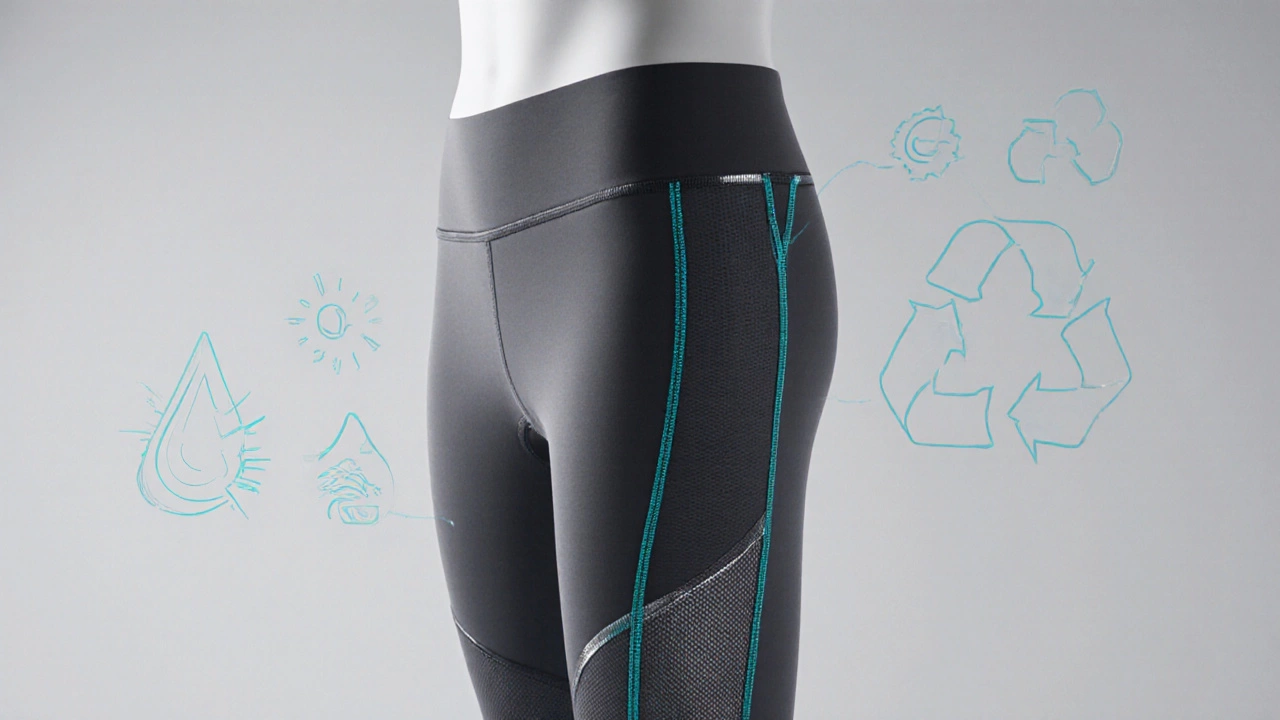
Sustainability is now a core characteristic
Eco‑friendly sportswear has moved from niche to mainstream. Key sustainable attributes include:
- Recycled polyester made from post‑consumer plastic bottles.
- Organic cotton blends that reduce pesticide use.
- Water‑less dye processes that cut usage by up to 80%.
- Take‑back programs where brands recycle old garments into new ones.
When a piece lists Sustainable materials on its tag, you know it’s designed to lessen environmental impact while still delivering performance.
Brand examples that illustrate these traits
Here’s how three major brands translate the characteristics into real products:
- Nike Dri‑Fit - combines moisture‑wicking polyester with engineered mesh for breathability and uses recycled polyester in many items.
- Under Armour HeatGear - focuses on compression zones, antimicrobial treatment and a snug fit that feels like a second skin.
- Adidas Climalite - offers UV protection, flat‑lock seams and a strong commitment to ocean‑plastic recycled fabrics.
All three meet the four core goals while adding their own tech twists.

Quick comparison of common sportswear fabrics
| Attribute | Polyester | Nylon | Recycled Polyester |
|---|---|---|---|
| Moisture‑wick | High | Medium | High (same as regular) |
| Stretch | 4‑6% (with elastane blend) | 3‑5% (with elastane blend) | 4‑6% |
| Durability | Good | Excellent | Good |
| Environmental impact | Higher CO₂ footprint | Higher water usage | Up to 60% less CO₂ than virgin polyester |
| Typical use | Running tops, shorts | Technical jackets, windbreakers | Eco‑focused athleisure, training gear |
Buying checklist - what to look for
- Identify the activity: running, yoga, gym- different sports prioritize different features.
- Check the fabric label for moisture‑wicking, stretch percentage and any recycled content.
- Feel the seams: flat‑lock or seamless designs reduce irritation.
- Test the fit: move arms, squat, stretch- the garment should follow your motion without binding.
- Look for extra functionality: pockets, reflective details, antimicrobial coating.
- Consider sustainability: recycled fibers, low‑water dyes, brand take‑back programs.
Following this checklist helps you pick pieces that truly deliver the core characteristics of sportswear.
Frequently Asked Questions
What is the main purpose of sportswear?
Sportswear is built to manage sweat, support movement and stay comfortable during physical activity while still looking good enough for daily wear.
How does moisture‑wicking work?
The fabric pulls liquid from the skin into capillary spaces and spreads it across a larger surface where it can evaporate more quickly, keeping you dry.
Are recycled fabrics as durable as virgin ones?
Modern recycling processes produce fibers with strength comparable to virgin polyester, especially when blended with small amounts of elastane.
Do compression leggings improve performance?
Compression can enhance circulation and reduce muscle vibration, which many athletes feel translates into less fatigue and quicker recovery.
What should I avoid when buying sportswear?
Steer clear of garments with heavy, non‑breathable linings, excessive seams that cause chafing, and fabrics that feel stiff after a few washes.
